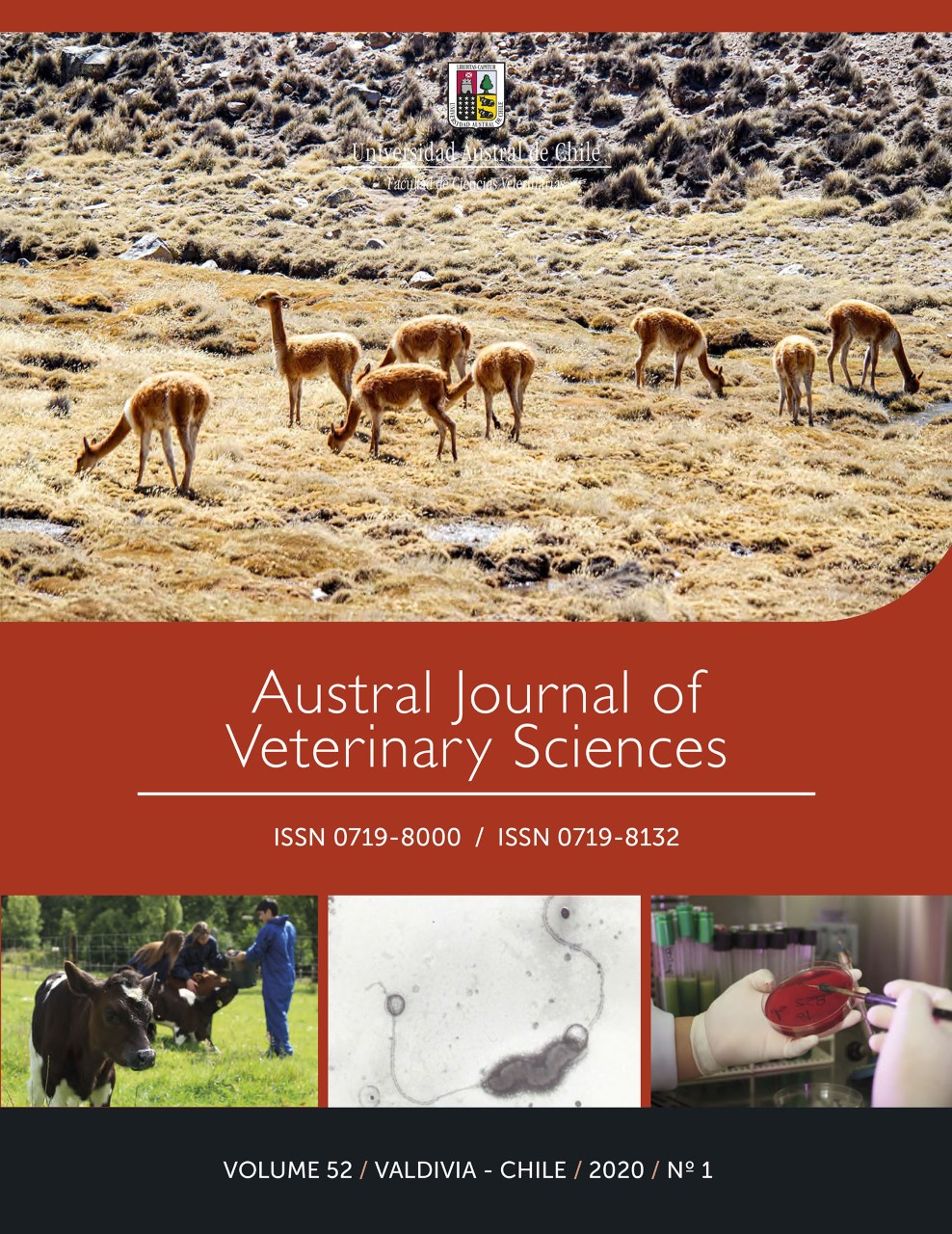Comparison of two phenotypical methods to segregate resistant and susceptible lambs to parasitic nematodes
Contenido principal del artículo
Resumen
The objective of this study was to compare two segregation methods to select resistant and susceptible female Pelibuey lambs infected naturally with gastrointestinal nematodes (GINs) in relation to their haematological and immunological response. For 6 months, faeces and blood samples were taken fortnightly from 40 grazing 5-month-old female lambs. The lambs were classified according to two methods using faecal egg count (FEC) as a phenotypical trait. In the first (reference) method (M3SE, n = 22), resistant (RES) lambs had FEC lower than the mean - 3 standard errors, the susceptible (SUS) lambs levels higher than + 3 standard errors (n = 10) and the intermediate (INT) lambs (n = 8) were categorised by having FECs between the two values. The second method (QUM) divided the population, using quartiles, into resistant (RES; 25%), intermediate (INT; 50%), and susceptible (SUS; 25%) lambs. The agreement between both methods was estimated using the Kappa index. The packed cell volume (PCV), total plasma protein (TPP) and peripheral eosinophils (EOS) were determined for each group. Serum was used to evaluate the IgA levels. PCV and TPP values were higher (P<0.01) in the RES lambs (31.5 ± 3.4 and 6.16 ± 0.5 g/dL by QUM, respectively, and 31.5 ± 3.9 and 6.24 ± 0.49 g/dL by M3SE, respectively) than the SUS lambs (28.1 ± 4.7 and 5.94 ± 0.5 g/d, respectively, by both methods). The EOS and IgA values increased with age. M3SE and QUM were in moderate agreement (Kappa = 0.43). We concluded that the two segregation methods allowed for the identification of the same female SUS lambs, but a greater number of animals were categorised phenotypically as resistant using the M3SE method. PCV and TPP can help to identify phenotypically resistant animals.

